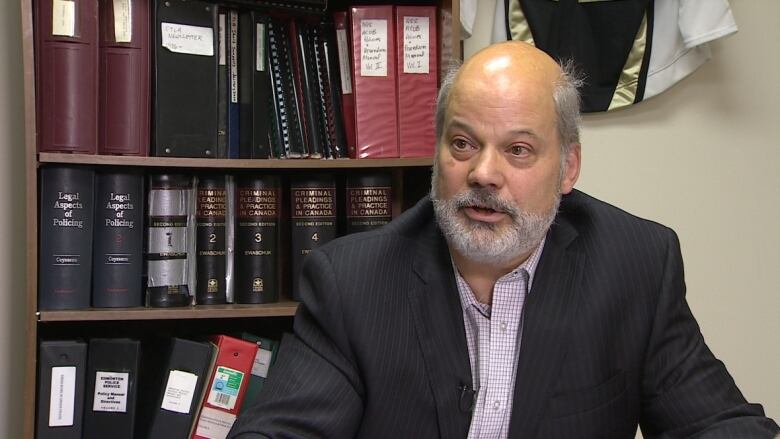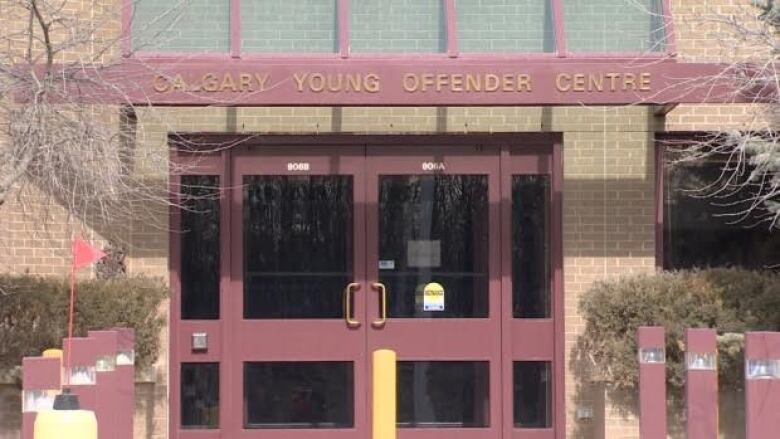Alberta advocate concerned about pepper spray use on young prisoners
'Sometimes, it would appear that theyre just enjoying their opportunity to use new toys,' lawyer says

Brandon was bored.
One June day, left alone in a segregation cell for at least 12 hours, with only dog-eared comic books, paper and a pencil, the teen wet a piece of paper and stuck it on his cell-door window.
Guards told him to take it down. Instead, he began to bang on the door.
The guards warned the 16-year-old to stop, to take down the paper, or they would pepper spray him. Brandon (not his real name) covered his face with his shirt just before seven guards entered his cell.
"They came in with riot gear," said his lawyer Samantha Labahn. "He was pulled to the ground and then, when he was on the ground, he was pepper sprayed in the face."

"What was the imminent danger?" Engel asked. "What was the reason for the use of force? So what if he's kicking at the door, banging away. He's not threatening anybody. He's just in his cell causing a ruckus."
Pepper sprayed again
In July, still in pre-trial custody and back in segregation at EYOC, Brandon again bangedon his cell door. This time, Labahn said, guards gave the teen a double dose of pepper spray.
"They actually put pepper spray underneath his door this time," she said. "So he got much more of the effect than last time. When they came in, it was exactly the same situation. Approximately seven guards came in, they took him down, pepper sprayed him some more."
What happened to Brandon, twice, was a marked departure from previous procedure in place at EYOC.

"In the past, if there was a need to use OC (oleoresincapsicum) spray, a regional response team would be called in to administer the spray," provincial justice department spokesperson Michelle Davio said in an email.
Now some staff at the youth correctional facilities in Edmonton and Calgary have been trained and certified to carry and use pepper spray on the job.
According to Davio, there were no injuries to staff or the young people involvedin two of the three pepper spray incidents. She said in July, two young people suffered bruises and superficial cuts in an altercation with each other before they were pepper sprayed.
Alberta Child and Youth Advocate Del Graff said hehas already met once with the deputy justice minister about the pepper spray issue, and plans to meet again with him soon, hoping to influence the policy.
"We're quite concerned about it being used in youth justice," Graff said. "We're concerned about the application of the policy and whether or not there are safeguards for young people to ensure that it's not just used as a behavioural tool."
Davio denied pepper spray is being deployed as a behavioural tool.
"OC spray is used in certain circumstances to help avoid situations where greater use of force would be required, and the likelihood of injury or harm is higher for the youth and staff involved," she wrote.
The decision to use pepper spray, she said, "is carefully reviewed and only exists after all lesser use-of-force options are exhausted."
'Clearly excessive force'
Labahn is upset by the amount and type offorce used against her client.
"It really didn't appear to be necessary at all," she said, "given that there were seven officers who attended to him, and the fact that he was already on the ground and likely under control when they utilized the pepper spray."
Engel was stronger in hiscriticism.
"Based on those circumstances, if that's the way it happened, that is clearly excessive force," he said. "Arguably it would be a criminal offence of assault with a weapon."
Justice Minister Kathleen Ganley said in a statement her department continually review policies and procedures to ensure the appropriate balance is found.
"We will continue to listen to any concerns raised to ensure any method employed, including OC spray, is effective in minimizing physical confrontations while respecting the needs of young people in custody."
Concern raised by Child and Youth Advocate
Graff said he has heard from concerned young people and community agencies, and he wants to make sure pepper spray is used only as a last resort. He said he's also worried about the potential health impacts on young people exposed to pepper spray in confined spaces, such asjail cells.
"Our research primarily has information from the U.S. jurisdictions, most of which suggest that using pepper spray with young people in particular in confined spaces is not an appropriate measure."
Nearly 90 per cent of state-run youth jails in the United States don't allow guards to carry pepper spray, according to the American Council of Juvenile Correctional Administrators.
"International and national standards related to chemical restraint use reinforce the fact that chemical sprays should never be used as a form of punishment, and that if use is authorized, strict rules are applied for usage, reporting and post-use practices," the council said in a 2011 study.

A spokesman with the Ontario Ministry of Children and Youth Services saidpepper spray can only be used on young prisoners "as a last resort, when other less intrusive methods of intervention have been exhausted," and there must be risk of imminent harm, escape or significant property damage.
Engel is worried about Alberta's new approach to the use of pepper spray.
"You have to think that they are trying to create the effect of terrorizing these kids," he said. "And that's the problem. When you start arming correctional officers who are not adequately trained, they sometimes resort to them really quickly.
"Sometimes, it would appear that they're just enjoying their opportunity to use new toys."












_(720p).jpg)


 OFFICIAL HD MUSIC VIDEO.jpg)
.jpg)



























































































